Buying Guide for the Best Travel Adapters For Iphones
Choosing the right travel adapter for your iPhone is important to ensure your device stays charged and safe while you're abroad. Travel adapters allow you to plug your iPhone charger into foreign outlets, which often have different shapes and voltage standards than those in your home country. The best approach is to consider where you’re traveling, what devices you’ll be charging, and how many devices you need to charge at once. Understanding the key features will help you pick an adapter that fits your needs and keeps your iPhone powered up wherever you go.Plug Type CompatibilityPlug type compatibility refers to the shapes and sizes of the prongs on the adapter that fit into wall outlets in different countries. This is important because different regions use different plug types, and using the wrong one means you won’t be able to connect your charger at all. Plug types are usually labeled by letters (like Type A, C, G, etc.). Some adapters are single-region, while others are universal and cover multiple types. If you’re visiting just one country, a single-type adapter is fine, but for multiple destinations, a universal adapter is more convenient. Always check the plug type(s) used in your destination before choosing.
USB Ports and OutputUSB ports and their output determine how many devices you can charge at once and how quickly they will charge. This is important because many modern adapters come with built-in USB ports, allowing you to charge your iPhone directly without needing the original charger. The output is measured in amps (A) or watts (W), and higher values mean faster charging. Basic adapters may have one USB port, while others offer several. If you travel with multiple devices (like an iPhone and an iPad), look for an adapter with multiple ports and higher output. For just your iPhone, a single port with at least 2.1A output is usually sufficient.
Voltage CompatibilityVoltage compatibility means the adapter can handle the electrical voltage in the country you’re visiting. This is crucial because plugging your device into an incompatible voltage can damage it. Most iPhone chargers are dual voltage (100-240V), so they work worldwide, but you still need to check. Some adapters also include voltage conversion, but for iPhones, this is rarely necessary. Always confirm your charger supports the local voltage, and if it does, a simple adapter is enough. If not, you’ll need a converter, but this is uncommon for iPhones.
Build Quality and Safety FeaturesBuild quality and safety features refer to how well the adapter is made and what protections it offers, such as surge protection or shutters to prevent accidental shocks. This is important because a poorly made adapter can overheat or damage your devices. Look for adapters with certifications (like CE or FCC), sturdy construction, and built-in safety features. If you’re traveling to places with unstable power, surge protection is especially useful. For most users, picking an adapter from a reputable brand with visible safety marks is a good way to ensure reliability.
Size and PortabilitySize and portability describe how compact and easy to carry the adapter is. This matters because you’ll want something that fits easily in your bag or pocket, especially if you’re moving between locations. Some adapters are bulky, especially universal ones, while others are slim and lightweight. If you value traveling light or have limited space, choose a compact model. If you need to charge multiple devices or want more features, you might accept a slightly larger size.
![[1-Pack] Canada to UK Plug Adapter,](https://images-proxy.bestreviews.guide/t3LE_hrj8xRmu7xj5K8MbhIpbo8=/0x150/https://m.media-amazon.com/images/I/31Qwzr0GlnL._AC_CX679_.jpg)
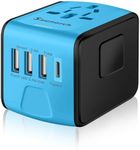

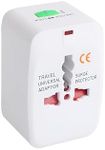



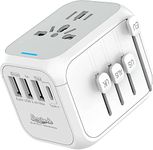
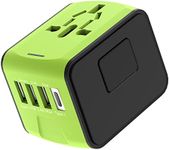
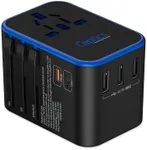
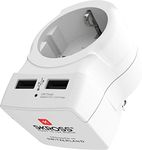
![[2-Pack] Canada to UK Plug Adapter, VINTAR UK Ireland Travel Plug Adapter with 2 USB Ports and 2 American Outlets, 4 in 1 International Power Adaptor for England Singapore Dubai Hongkong (Type G)](https://images-proxy.bestreviews.guide/4bnrnuhVjSYLxLWOgLfMVKjcqsE=/0x150/https://m.media-amazon.com/images/I/41UpA1Hp0oL._AC_CX679_.jpg)
